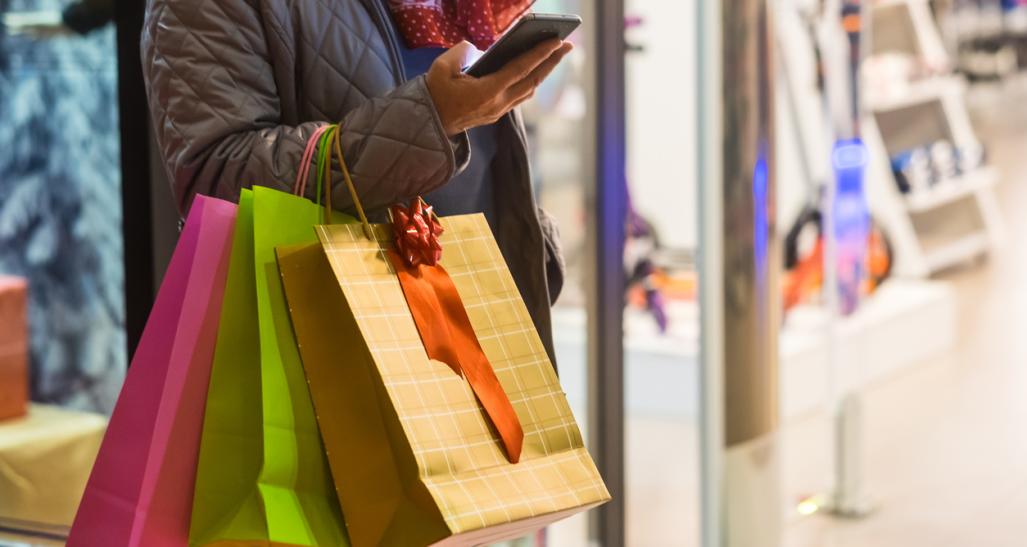
Erica Carranza is vice president of consumer psychology at market research firm Chadwick Martin Bailey, where she uses her doctorate degree in psychology to give clients an understanding of consumers. Her clients include major brands such as Disney, Viacom, Mattel, Instagram, Prudential and American Express.
She previously led insights research at American Express, where she was a recipient of the CMO Award for Achievement in Excellence. Carranza spoke with NRF about consumer mindset and holiday shopping in this unusual year.

VP of Consumer Psychology,
Chadwick Martin Bailey
What retail-oriented holiday traditions are most likely to change in 2020 and what will the emotional impact be on consumers?
Holiday shopping traditions that often involve crowds are sure to change this year — like heading to the mall and waiting in line so the kids can see Santa, then staying to shop and enjoy the ambiance. And many holiday gatherings will get cancelled, negating the need to buy presents for hosts or Secret Santa-style gift swaps.
We’ll also see a shift away from gifting experiences, like dining or travel, so shopping will center on “stuff” — which is good for retailers. But the pandemic has only increased consumers’ desire to buy gifts that are meaningful. They’ll be looking for things that are unique and personal, that will bring lasting joy, or that will help their loved ones make the most of remote living.
Emotionally speaking, these changes will be a mixed bag for consumers. Some changes will be sad, like missing the pleasure of seeing gifts opened in person. And some will be stressful, like figuring out how to shop safely or find gifts that are truly meaningful.
But other changes may come as a relief. For example, some consumers won’t miss feeling obliged to find a good Secret Santa gift this year. And consumers who are able to maintain beloved traditions, despite this season’s challenges, will feel an even stronger sense of gratitude.
What do retailers need to understand about how shoppers handle this level of disruption?
Shoppers will be juggling a lot this year, both mentally and emotionally. They’ll be preoccupied, rushed and exhausted. Many may even be depressed. They won’t have the stamina to spend a lot of energy searching for good gift ideas or agonizing over their options.
With shoppers in this state, it will be important for retailers not to overwhelm them further. The focus should be on delivering certainty, security, ease and convenience.
For example, when shopping online, “too much choice” can be debilitating for consumers even on the best of days. So, this holiday season, it’s even more critical that retailer apps/sites lead shoppers to relevant gift ideas quickly and easily.
“It’s even more critical that retailer apps/sites lead shoppers to relevant gift ideas quickly and easily.”
Erica Carranza
Shoppers will also be focused on making the logistics of gifting safe and convenient, for themselves and for their recipients. Nobody wants to give the gift of an errand — especially when a trip to return an item could put that person’s health at risk. This year, holiday shoppers will be highly motivated by assurances of on-time delivery, free shipping on deliveries and returns, and flexible return policies.
Online wish lists will appeal for similar reasons. Shoppers often worry that using a wish list seems like an “easy way out.” But, this year, more will want to feel sure that gifts won’t need to be returned. When people are already feeling unsure of so much in their day-to-day, a little certainty goes a long way.
How can retailers help shoppers create new traditions?
OId habits die hard! One strategy for attracting customers is to help them keep their favorite traditions during this difficult time.
For example, holiday shoppers love to browse, but won’t want to linger in busy stores. As an alternative, retailers could host small, after-hours events for select customers.
Many gifts will be opened over Zoom this season. Retailers could help make virtual unboxing more fun and memorable with options for customizable gift-wrapping.
“Retailers could help make virtual unboxing more fun and memorable with options for customizable gift-wrapping.”
Erica Carranza
Today’s consumers are also committed to shopping small — especially this year, when local businesses are struggling. But consumers also want to stay safe. So small retailers could benefit greatly by finding ways to band together and deliver localized online marketplaces. Ideally in time for Small Business Saturday.
Finally, stockings will be hard to stuff for the many people avoiding stores where they’d usually pick-up smaller items. An enterprising retailer could create a one-stop-shop online, where customers can fill a virtual stocking with gifts for each person in the family, then have them shipped (or pick them up) in separate bags that can be emptied into real-life stockings for Christmas. (If a retailer does this, let me know—I’ll use it!)
Holiday shopping can be stressful as it is, and this year is certain to be heightened. What should retailers look out for to keep their associates and shoppers safe?
Retailers generally know what’s needed to keep people safe, including mask policies, occupancy limits and promoting social distancing. But it’s not enough to put safety measures in place. Shoppers and employees must also feel safe.
Fostering a sense of safety is crucial for employees to feel comfortable enough to be helpful and welcoming, and for customers to feel comfortable enough to shop.
“It’s not enough to put safety measures in place. Shoppers and employees must also feel safe.”
Erica Carranza
HomeGoods offers a nice example of how to foster a sense of safety using both explicit and implicit cues. They play frequent announcements reiterating their safety policies in a calm and cheerful tone. They station employees wearing masks at the entrance to greet customers, clean carts and keep a headcount. And they position visually appealing markers down each aisle to signal the flow of traffic and proper distancing.
It’s also important to have plans for how to support employees who enforce safety guidelines, and how to manage customers who break them. It’s a public health issue, first and foremost. Plus, if some shoppers wear masks below their chins, other shoppers won’t want to come back.
Any other advice you’d offer retailers at this time?
Learn more about this season's holiday trends in retail here.
Deliver curated ideas and inspiration across channels. To quote a shopper I recently spoke to: “I think I’ll need more guidance this year than ever. Help me figure out what makes sense and strikes a balance between ‘nice thing you can use at home’ and ‘clutter.’”
Focus holiday marketing messages on meaningful gifts, safety, ease and convenience.
And show that meaningful giving is a value that the retailer shares (for example, through charitable donations).


